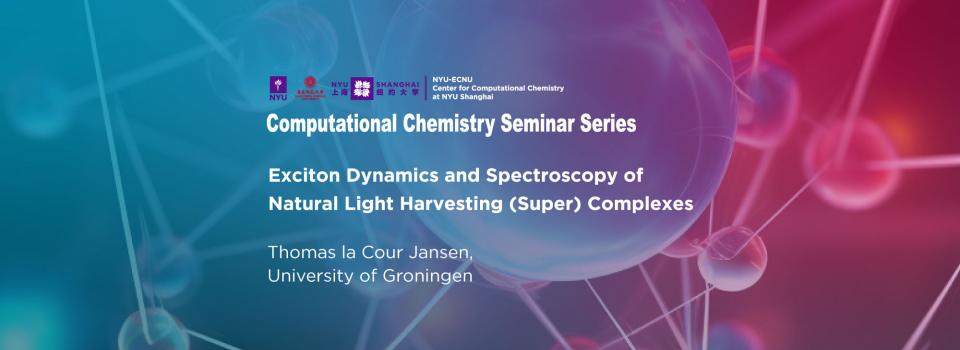
Abstract
Recent developments in two-dimensional electronic spectroscopy have paved the way for mapping the energy flow through a complete photosynthetic apparatus. Furthermore, this experimental technique combined with clever biochemical engineering allow for the interrogation of the role of the connectivity between different parts of light harvesting super complexes. However, due to the broad linewidth and complex composition of these systems, computational support is crucial for the interpretation of the obtained spectra. Here, I will discuss the development and application of efficient quantum dynamical simulation methods for predicting both the energy flow and two-dimensional electronic spectra in such extensive systems involving hundreds or even thousands of coupled chromophores. I will discuss the application to both (part of) the PSII photosynthetic super complex of green plants and the antenna systems of purple bacteria.
Biography
Thomas la Cour Jansen is a Professor at the University of Groningen in the Netherlands. He received his Ph.D. degree in 2002 from the same university, where he graduated on a project on modelling two-dimensional Raman spectroscopy of liquids. He then moved to the University of Rochester and later the University of California at Irvine, where he worked with Professor Shaul Mukamel on simulating two-dimensional infrared spectroscopy. He returned to Groningen in 2005, first on a three-year VENI grant and in 2008 he received the VIDI grant and became tenure-track Professor at the University of Groningen. Here he developed tools for studying structure and ultrafast dynamics of complex systems including liquids, proteins, and light-harvesting systems. He further collaborates strongly with experimentalists to provide the interpretation of complex experimental data predominantly from ultrafast spectroscopy experiments. Thomas la Cour Jansen is director of the Nanoscience master program, which has for several years been rated as the best master programme in the Netherlands.
Seminar Series by the NYU-ECNU Center for Computational Chemistry at NYU Shanghai


